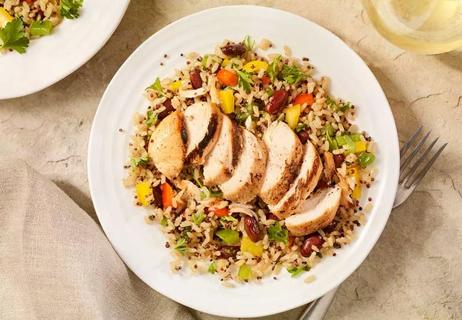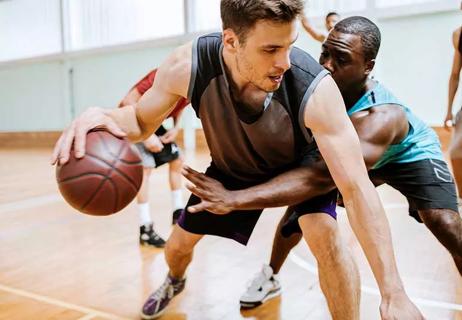Learn the way food, workouts and hormones impact your metabolism and what you can do to keep it running well

Anabolism and catabolism may sound like superheroes from your kid’s favorite TV show, but these terms actually come from the health world. Doctors, dietitians, health coaches, and bodybuilders use their understanding of these two functions to create diet and exercise plans that can influence your metabolism (how your body uses energy) and ultimately, your overall health.
Advertisement
Cleveland Clinic is a non-profit academic medical center. Advertising on our site helps support our mission. We do not endorse non-Cleveland Clinic products or services. Policy
But what exactly are anabolism and catabolism? Registered dietitian Anthony DiMarino explains how these processes work and gives some helpful tips for ensuring that your metabolism is running at full speed.
When you think catabolism, think digestion, says DiMarino. This process takes larger structures like proteins, fats or tissues and breaks them down into smaller units such as cells or fatty acids.
Catabolism occurs when you’re digesting food. For example, it’s the process that dissolves a piece of bread into simple nutrients your body can use, like glucose (blood sugar). And if your body isn’t getting the food and nutrients it needs to fuel daily living, catabolism is the mechanism that breaks down muscle and fat for energy.
Anabolism is the opposite of catabolism: It’s the mechanism that takes smaller units like nutrients, cells, or amino acids and bonds them together to create bigger structures.
“One example of anabolism in action is when your body is trying to heal a cut. It adds tissue and structures around that wound,” DiMarino explains. “It’s also the process involved in a child’s growth and in building stronger muscles.”
Hormones act as messengers, telling your body what functions to perform. They trigger anabolism and catabolism.
Advertisement
Catabolic hormones are often activated under stress, such as when you have a fight-or-flight response. They include:
The anabolic hormones are responsible for growth and tissue repair. They include:
A lot of uncontrollable factors, including age, sex and genetics, direct your metabolism. But, says DiMarino, you can positively influence hormones that play a role in anabolism and catabolism with these healthy habits:
Catabolism functions no matter what you give your body, says DiMarino. It breaks down food, whether it’s junky or nutritious. Whatever it doesn’t use for energy now, it stores for later (hello, extra pounds).
But anabolism is entirely different. It only functions properly when you’re getting enough nutrients through foods like vegetables, fruits and lean meats. Your body needs high-quality building blocks to heal, repair and grow.
Different types of exercise are considered anabolic or catabolic, depending on whether they use energy to build or break down something.
“There’s been a lot of research on the best type of exercise for weight loss. Cardiovascular workouts (catabolic) are great for burning a lot of calories quickly. But weight-bearing exercises (anabolic) produce an afterburn effect using more calories over a longer period to repair muscles,” reports DiMarino. “What we’ve found is that doing a combination of anabolic and catabolic workouts is most effective.”
Anabolism and catabolism are both crucial parts of your metabolism. They fuel your everyday activities, from jogging to healing a paper cut. The best way to support those processes and boost your metabolism is to adopt healthy habits. That way, you’ll be in the best shape to deal with whatever life throws your way.
Advertisement
Advertisement
Learn more about our editorial process.
Advertisement

It depends on factors like your age, activity level and if you want to maintain, lose or gain weight

Avocados, cheese and nuts are high in calories but have big health benefits

Calorie counts on nutrition labels can be off by up to 20%

Focus on your body’s metabolic set point by eating healthy foods, making exercise a part of your routine and reducing stress

Calorie reduction can do more than just help you lose weight — it can also lower age-related inflammation

Your metabolism may torch 1,300 to 2,000 calories daily with no activity

Consuming fewer calories than your body burns is a ‘calorie deficit’ that can lead to weight loss

Understand how your body creates energy to take your fitness to the next level

The best parenting style balances enforcing rules and showing plenty of love

Tips include cutting back on sugar, focusing on exercise and managing stress

It can be harder to let go when you’ve invested time, energy and emotions — but it might be the healthier choice long term